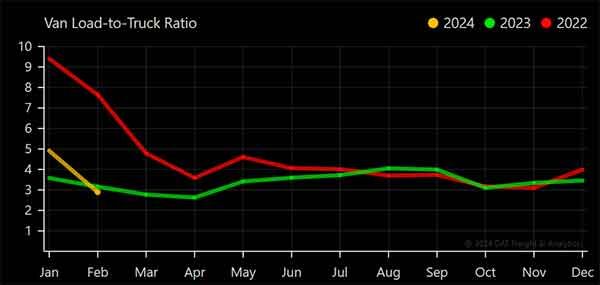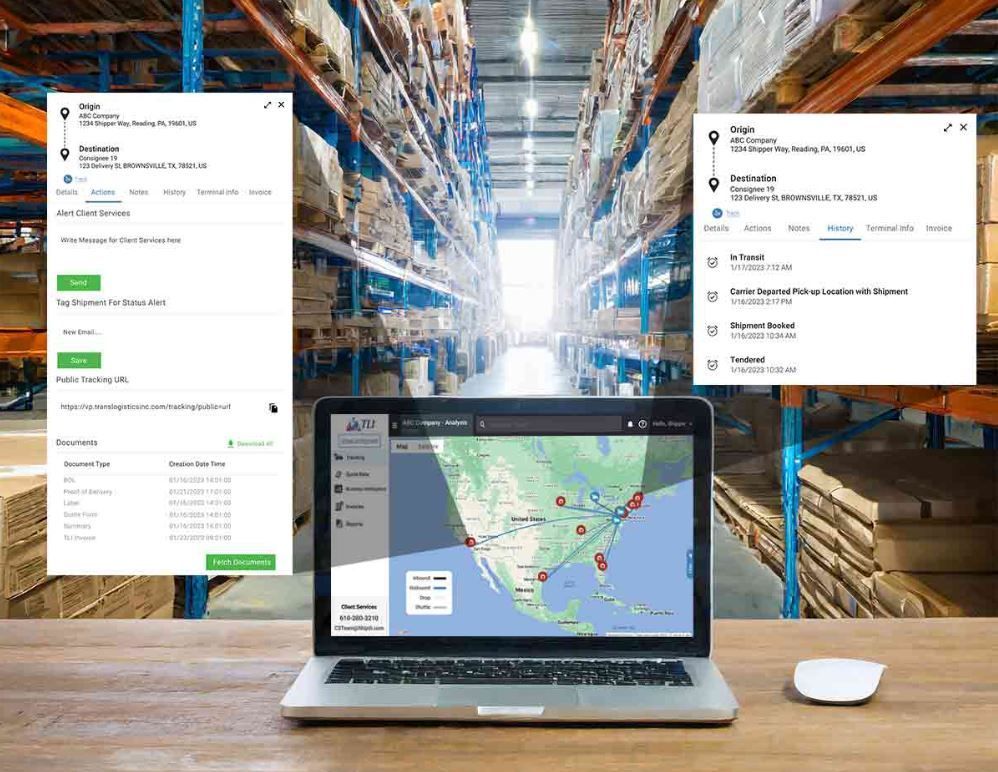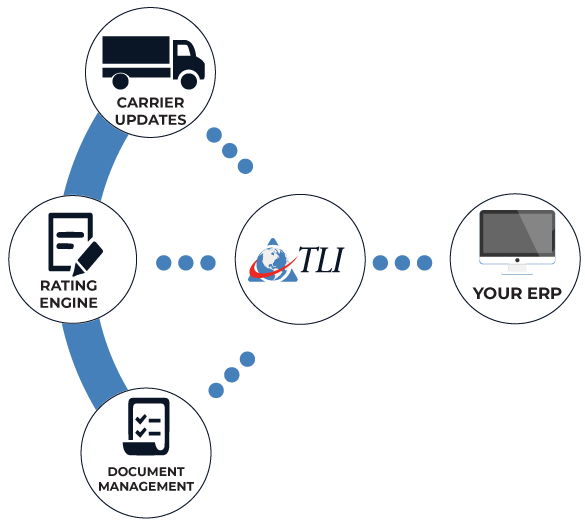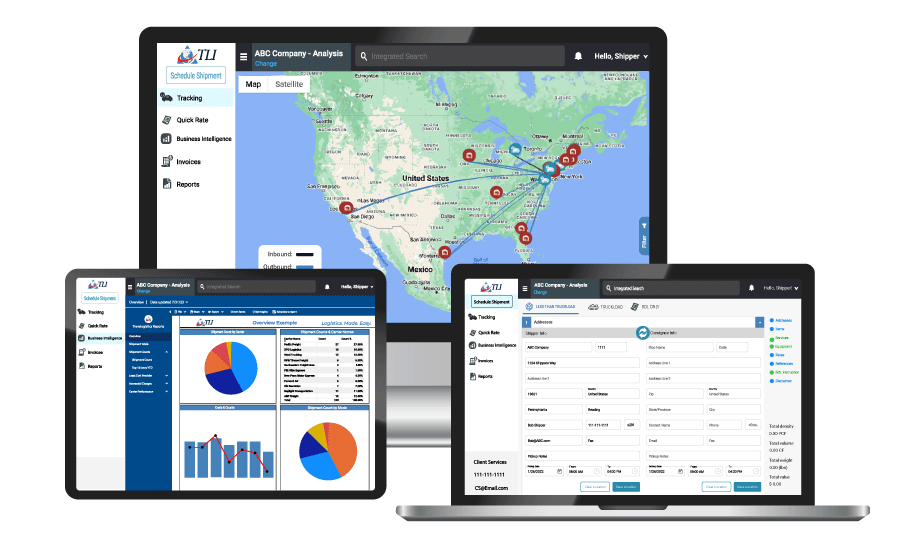How is freight priced?
How Are Freight Shipping Rates Calculated?
Whether you're an individual shipping a package or an enterprise business moving large quantities of merchandise, grasping the calculation of freight shipping rates is crucial. This guide will dissect the influencing factors behind freight shipping rates, offering you a comprehensive understanding of the shipping rating process.
Freight Rates are influenced by Supply and Demand
Supply and demand are fundamental to our free-market economy and play a key role in price fluctuations across industries. The shipping industry is no exception, as it is significantly impacted by these factors. The intersection of supply and demand determines the price, and equilibrium is achieved when a freight broker secures a load on behalf of shippers, locking in the price.

Supply refers to the availability of transportation equipment (trucks, vans, reefers, etc.) to handle shipments. In today's market, characterized by a steady decline in new drivers, supply is limited, leading to consistently higher prices typically compared to previous years. As the number of available carriers (supply) increases, shipping prices decline. In the figure above, supply is noted as 'truck.'
Demand in the shipping industry represents the total volume of goods requiring transportation. When demand rises, so do the costs associated with moving shipments. In the figure above the demand is demonstrated as 'load', so the load-to-truck ratio is comparing the supply (truck) relative to the demand (load.)
In 2022, there were more goods awaiting shipment than there are available trucks to transport them. In such situations, prices surge, requiring companies looking to ship their products to pay more for transportation. While in other markets such as early 2024, we see ample carrier capacity and freight pricing remains low.
What is a freight rate?
Freight rates, representing the cost of transporting goods, depend on various factors beyond typical transportation costs. Key determinants include the mode of transportation (such as truck, ship, train, or aircraft), weight, size, distance, pickup and delivery points,
FSC, and the type of goods being shipped. Certain transportation modes, like
domestic LTL, require
NMFC numbers and
freight class, while international modes may necessitate a
harmonized tariff schedule code (HTS).

How are freight cost calculated?
Length of haul
The distance your freight needs to travel to reach its destination significantly influences the price you'll pay. Typically, longer distances result in higher costs, although they might have a better rate-per-mile (RPM). The length of haul is divided into five categories.
| Length of Haul | Miles |
|---|---|
| Short-Haul | <250 |
| Mid-Haul | 250-400 |
| Tweener | 401-800 |
| Long-Haul | 801-1200 |
| Extended-Long | >1201 |
The distance between the starting point and the destination is a key determinant of freight shipping rates, with carriers factoring in mileage or zones covered to calculate costs. Generally, longer distances result in higher shipping rates, as carriers factor in expenses like fuel costs, driver wages, and other long-haul transportation expenses.
Shipment Density, NMFC number and Freight Class
The weight and size of a shipment significantly impact freight shipping rates, with carriers charging based on either actual weight or dimensional weight, whichever is higher. Actual weight refers to the physical weight of the shipment, while dimensional weight is calculated by multiplying its length, width, and height and dividing by a dimensional factor. Our Transportation Management System offers shippers access to both contract types to select the least cost provider dynamically on each shipment scheduled. Accuracy in measuring and providing shipment weight and dimensions is crucial for obtaining precise freight shipping rates, as carriers determine the dimensional factor according to their specific rules. If dimensional weight surpasses actual weight, the carrier will charge based on the dimensional weight. The dimensions populate the PCF, which is then used to look up the NMFC number and freight class, which is then rated against the CWT. The easiest thing a shipper can do is role out a TMS system to automate this process entirely.

Mode of Transportation
The choice of transportation mode for shipping goods impacts freight rates significantly. Options such as full truck load (FTL), less-than-truckload (LTL), air freight, ocean freight, and rail freight each have their own cost structures based on factors like capacity, speed, and convenience. TLI is a multi-modal freight broker and offers shipper support on all of these modes.
Rail freight provides a cost-effective and moderately speedy option for certain routes. Truckload shipping is typically pricier than LTL for smaller shipments occupying only a portion of the truck. Although air freight is the quickest, it comes with a higher price tag. Ocean freight is ideal for large loads but entails longer transit times. Familiarizing yourself with the advantages and disadvantages of each mode will enable you to make a well-informed decision that suits your requirements and budget.
Freight Accessorials
Freight accessorial charges encompass extra fees for services beyond standard pickup and delivery, such as residential delivery, liftgate service, and fuel surcharges. These charges, varying by carrier and shipment requirements, are essential to discuss before finalizing the shipping agreement. By understanding and budgeting for these additional fees, you can prevent unforeseen costs and ensure a seamless shipping process.

Market Conditions
Changes in supply and demand can affect freight shipping rates too. When demand is high, like during peak seasons or holidays, carriers may raise rates. Conversely, rates may be more competitive during slower periods when carriers aim to fill their capacity.
Monitoring market conditions and adjusting your shipments accordingly can help you benefit from lower rates or prepare for possible increases. Stay updated on transportation industry trends and collaborate closely with your logistics provider at TLI to manage market changes and optimize shipping expenses.
Carrier Selection
Choosing the right carrier greatly affects freight shipping rates. Each carrier has its own pricing, services, and specialties. Researching and comparing multiple carriers is crucial to find the best mix of service, reliability, and competitive rates for your shipping needs.
When picking a carrier, consider factors like reputation, coverage area, delivery times, customer service, and pricing clarity. By ensuring your freight broker is doing their homework and getting quotes from various carriers, you can choose the best option that meets your needs and budget.
Urgency of Your Shipment
The urgency of needing your freight delivered directly affects the cost involved. Ideally, it's best to plan your shipments in advance. In the trucking industry, the time you give your transportation provider before a load's departure, known as lead time, is crucial for budget-friendly and on-time delivery.
Freight Pricing Example:
Consider the following scenario involving Susan: Susan has a load she urgently needs to move. The receiver has been waiting for days, and further delays will disrupt their supply chain significantly.
In the urgency of meeting her production line expectations, such delays are rarely accepted, and to maintain her customer partnerships, Susan must ship her freight as soon as possible. However, this last-minute urgency comes with a high price tag.
Because Susan didn't provide advanced notice to her transportation partner, there's a limited supply of available trucks, as many have already scheduled their upcoming days. This scarcity of options can result in Susan paying a higher price due to the limited availability.
How is freight priced?
Now that we understand how freight is priced, it's crucial for shippers to consider the benefits of integrating TLI's freight rates into their ERP system for instant pricing. Reach out today to kickstart a new and improved shipping program.

Integrating freight rates directly into your ERP system and leveraging the TMS system for additional integrations like tracking and freight claims, as well as Microsoft Power BI dashboards, offers several benefits:
- Streamlined Operations: Having freight rates directly within your ERP system streamlines the process of obtaining shipping costs, reducing the time spent on manual rate calculations and increasing operational efficiency. The underlying shipping services result in improved metrics and through integration visibility is realized. Integration with TMS for tracking and freight claims further enhances operational visibility and control.
- Enhanced Decision-Making: Access to real-time freight rates and shipment data through your ERP system allows for more informed decision-making. With the ability to track shipments and manage freight claims seamlessly, you can proactively address issues and optimize logistics processes to meet customer demands effectively.
- Data-driven Insights: Integrating with Microsoft Power BI dashboards enables you to analyze shipping data and performance metrics in-depth. By visualizing key metrics such as shipping costs, transit times, and delivery accuracy, you can identify trends, opportunities for improvement, and cost-saving strategies to drive business growth and profitability.

Integrating freight rates directly into your ERP system and leveraging additional functionalities offered by TMS systems like tracking, freight claims, and Microsoft Power BI dashboards can significantly enhance your logistics operations.
With streamlined processes, informed decision-making, and access to valuable insights, your business can achieve greater efficiency and competitiveness in the market. To experience these benefits firsthand and ensure you're getting the best freight rates, I strongly recommend shopping your freight rates through TLI. With our expertise and commitment to providing tailored solutions, we can help optimize your shipping processes and drive shipping success for your business.
TLI Insights
Get the latest logistics insights and tips from TLI's award-winning team. Stay ahead in transportation planning.
Questions? Email us at marketing@shiptli.com



